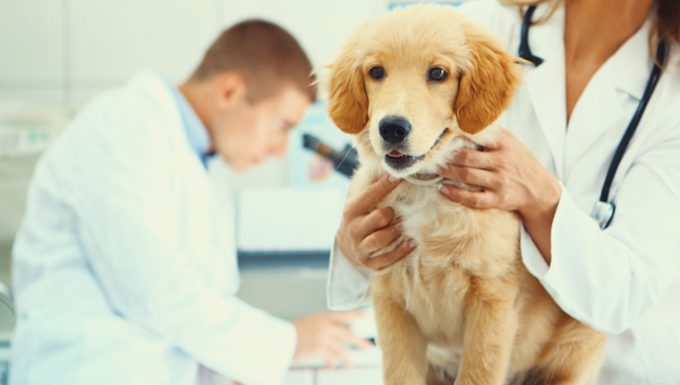Lymphadenitis in dogs happens when the lymph nodes become inflamed due to infection. The cause of the condition is usually inflammatory cells.
Generally, newborn pups are most at risk of the condition. This is due to their immune systems not being fully developed yet.
Note that the condition refers to lymph nodes that are affected by infection. Alternatively, the condition lymphadenopathy in dogs refers to more general enlarged lymph nodes. You can read more about swollen lymph nodes in dogs in general here.
Technically, the condition is also known as lymph node inflammation in dogs.
If you see the signs of the condition in your dog, then get to a veterinarian for a proper diagnosis and treatment.
Here’s what you should know about the symptoms, causes, and treatments for the condition.
Symptoms of Lymphadenitis in Dogs
The condition produces a range of symptoms. For instance, some of the most common symptoms include:
- Appetite loss
- Fever
- Coughing
- Diarrhea
- Problems swallowing
- Vomiting
- Weight loss
- Drinking more water than usual
- Peeing more than usual
- Abscesses
- General weakness
Additionally, the condition can affect various areas of the body. Specifically, these are called general, regional, and solitary lymphadenitis.
Causes of Lymphadenitis in Dogs

The cause of the condition is usually an infection. For example, some of the types of infection that can cause the condition include:
- Bacterial
- Fungal
- Viral
- Parasitic
Additionally, in some cases a reaction to medication can cause the condition.
Finally, younger pups are most at risk of the condition. This is due to the less developed nature of their immune system.
Treatments for Lymphadenitis in Dogs
Firstly, your vet will ask about your dog’s symptoms. Secondly, your vet will ask about your dog’s full medical history.
Thirdly, a full physical examination will be carried out. Blood and urine tests will be taken.
Ultimately, a fine needle aspiration of any affected lymph nodes can be used to diagnose the condition.
Generally, treatment focusses on the infection causing the condition. Usually, this will involve medication, such as antibiotics or antifungal drugs. As always, if your vet prescribes your dog any medicine, make sure to stick to the correct dose and frequency instructions. Also, complete the full course of medicine.
Finally, some of the infections that can cause the condition can also be spread from dogs to humans. So ask your vet about any appropriate safety measures you should take at home to protect yourself and your family.
Have you ever cared for a dog who suffered from this condition? How did your vet help your dog recover? Let us know in the comments section below.









